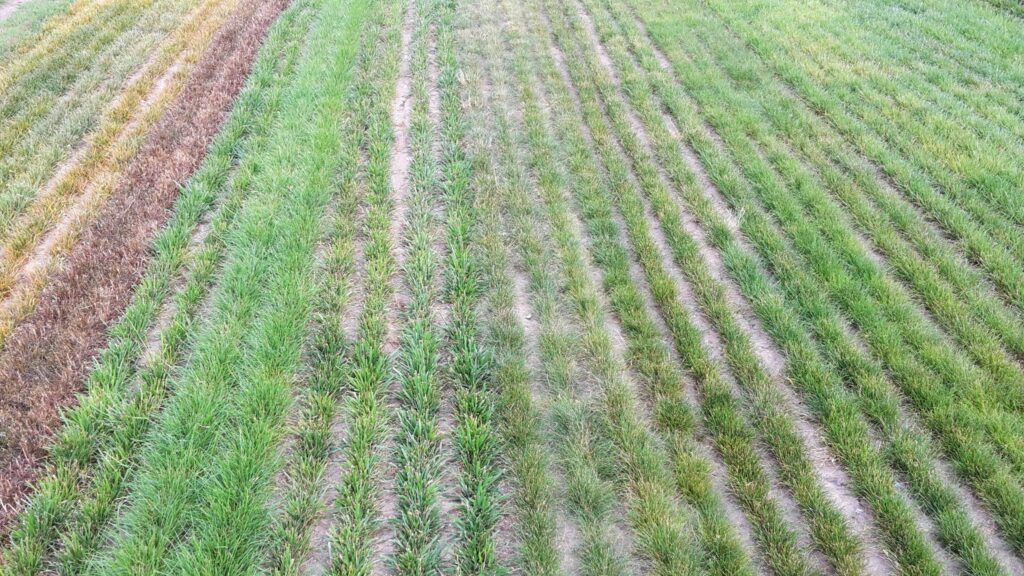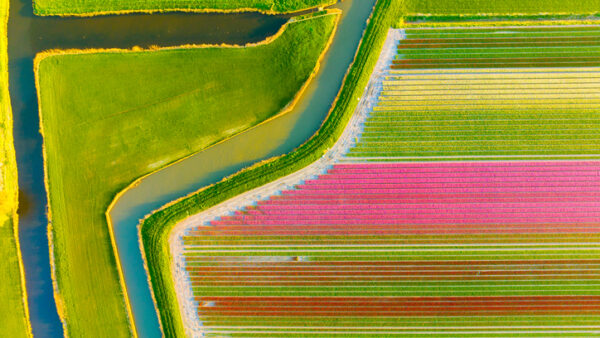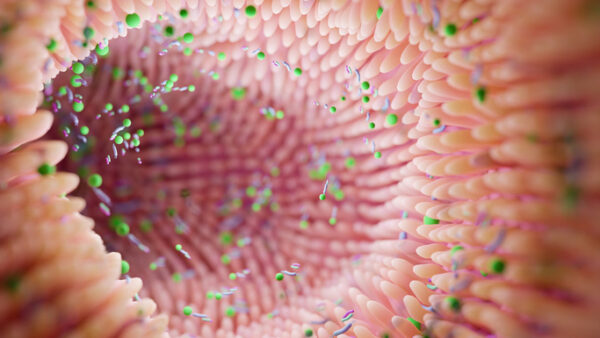Perhaps it seems obvious, but a grass plant grows from the base. Where other plants or trees form new shoots at the top of the plant, grasses develop new shoots very close to the roots. It suggests that roots play an important and unique role for grasses. This is indeed the case and in particular it allows grasses to be trimmed very short either by a lawn mower or by grazing animals over and over again without ceasing growth.
It is also a mechanism that helps the grass survive several kinds of stress. With climate change we are facing two types of stress that will have detrimental impacts on plant growth: Drought- and heat stress. In combination and alone these two factors can over time lay waste feeding paddocks, park lawns, fairways, sport pitches etc. The situation calls upon special skill sets to survive. Through our investigations we have observed that each grass species has its own set of survival mechanisms.
Under drought, soil always dries out from the top. As drought progresses down the soil profile, the first line of defense the plant will embark on is its deep root mass, which may allow it to continue taking up water and nutrients. While this mechanism does not enable the grass to economize with its water supply, it does allow the grass to prepare itself for even worse conditions. Once drought has progressed below rooting depth, the grass will need to rely on other defense mechanisms.
This is what typically happens during dry summers, when all water is used up down the soil profile. In this situation most grasses will go into hibernation. Closure of stomatal cells, through which the plant normally “breathes CO2 in and O2 out”, will immediately shut down transpiration – and with that – also any further growth. Some species also have thicker leaves and/or wax layer that will help them further saving water. Shutting down transpiration on a sunny day, however, does not come without a penalty: The photosynthetic machinery will still be bombarded with photons from the sun but now without cooling. The result is leaf wilting and – if prolonged – plant death.
How to win this epic battle against drought? The first step is to know what kind of drought you will be up against in the future. Is it spring- or summer drought or maybe both?
We have previously covered the research that has been undertaken at the RadiMax facility, where plants can be characterized both with respect to root profile and above-ground tolerance. The varieties that have been selected though this intensive drought regime and proven to have the highest root mass in deeper soil layers, provide the first answers to address both kinds of drought.
The final step is the right kind of management. When expecting a very hot and dry period it is important to create some natural shade from the plant itself. Simply avoid cutting the grass too short. Longer leaves will prevent cell damage in shaded leaves and will also ensure that photosynthetic products can still fed to the roots keeping them alive for rain to come.
Choose to win – select your varieties carefully!









